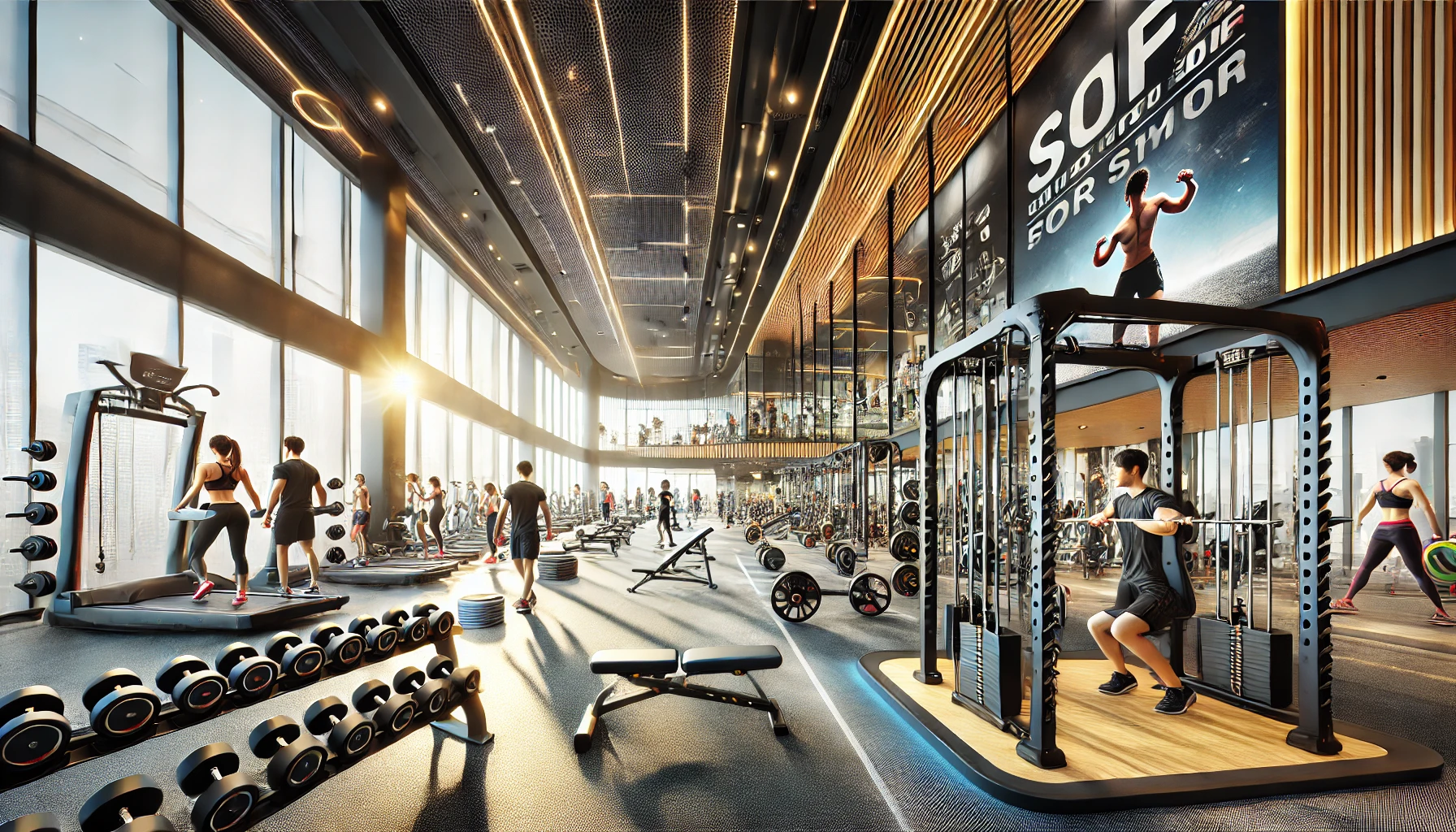
Push-Pull-Legs (PPL) Routine Explained: The Ultimate Guide
Introduction
The Push-Pull-Legs (PPL) workout routine is one of the most popular and effective training splits in the fitness world. It is widely praised for its simplicity, efficiency, and ability to deliver balanced results, making it suitable for both beginners and advanced lifters. Here’s everything you need to know about the PPL routine and how to maximize its benefits.
1. What is the Push-Pull-Legs Split?
The PPL routine divides your workouts into three distinct categories based on movement patterns:
- Push: Exercises that involve pushing motions, focusing on the chest, shoulders, and triceps.
- Pull: Exercises centered around pulling movements, primarily targeting the back and biceps.
- Legs: Dedicated leg day focusing on the lower body muscles, including quads, hamstrings, glutes, and calves.
2. Why Choose a PPL Split?
The PPL split is effective for several reasons:
- Balanced Training: It ensures all major muscle groups are targeted and given proper attention.
- Customizable: Whether you prefer 3-day, 4-day, or 6-day training weeks, PPL can be adapted to your schedule.
- Efficient Recovery: Each muscle group gets adequate rest before being targeted again, which helps with muscle growth and prevents overtraining.
3. How to Structure Your PPL Routine
There are different ways to set up your PPL routine, depending on your fitness level and goals.
Beginner-Friendly (3-Day Split):
- Monday: Push
- Wednesday: Pull
- Friday: Legs
- Saturday/Sunday: Rest
This approach gives plenty of recovery time, making it ideal for beginners or those with limited gym time.
Advanced Option (6-Day Split):
- Monday: Push
- Tuesday: Pull
- Wednesday: Legs
- Thursday: Push
- Friday: Pull
- Saturday: Legs
- Sunday: Rest
The 6-day split is great for experienced lifters looking to maximize volume and frequency. It allows you to hit each muscle group twice per week.
4. Key Exercises for Each Day
Here’s a sample list of effective exercises you can include in your PPL routine:
Push Day:
- Bench Press
- Overhead Shoulder Press
- Tricep Dips
- Lateral Raises
- Incline Dumbbell Press
Pull Day:
- Deadlifts
- Pull-Ups or Lat Pulldowns
- Bent-Over Rows
- Bicep Curls
- Face Pulls
Leg Day:
- Squats
- Romanian Deadlifts
- Lunges
- Leg Press
- Calf Raises
5. Benefits of the PPL Split
- Versatility: The PPL routine works well whether your goal is strength, hypertrophy, or general fitness.
- Volume and Frequency: It allows for higher training volume and frequency, which are key factors in muscle growth.
- Focus and Simplicity: With clear workout days, you can focus on specific muscle groups without overwhelming your training sessions.
6. Tips for Maximizing Results with PPL
- Adjust the Volume: Beginners might start with 2-3 sets per exercise, while advanced lifters may benefit from 4-5 sets.
- Prioritize Compound Movements: Exercises like squats, deadlifts, and bench presses should form the core of your workouts.
- Track Your Progress: Use a fitness app or journal to monitor your weights and reps, ensuring consistent progress over time.
7. Common Mistakes to Avoid
- Neglecting Recovery: Even with the best routine, lack of recovery can hinder progress. Ensure you’re getting enough sleep and nutrition.
- Overloading Too Quickly: Focus on proper form and gradual progression instead of chasing heavy weights too soon.
- Imbalanced Training: Ensure you’re not favoring one day (like Push) over the others, as this can lead to muscle imbalances.
Conclusion
The Push-Pull-Legs split is a fantastic choice for anyone looking to build muscle, increase strength, and achieve a balanced physique. Its adaptability makes it a top choice for lifters of all levels. If you’re ready to try a new training split, PPL might be the perfect fit for your fitness journey.
1. How does Push-Pull-Legs (PPL) routine work?
The Push-Pull-Legs (PPL) routine is a popular workout split that divides exercises into three main categories:
- Push: Exercises that target muscles involved in pushing movements, such as the chest, shoulders, and triceps (e.g., bench press, shoulder press, tricep dips).
- Pull: Exercises that focus on muscles involved in pulling movements, like the back and biceps (e.g., deadlifts, rows, pull-ups).
- Legs: Exercises targeting the lower body, including quads, hamstrings, glutes, and calves (e.g., squats, lunges, leg press).
Typically, a PPL routine is structured in a 3-day cycle, with each workout repeated 2-3 times per week, depending on recovery time and goals. For example, you might train push on Monday, pull on Tuesday, legs on Wednesday, and repeat the cycle with rest days strategically placed.
2. What is the 6-12-25 method?
The 6-12-25 method is a high-intensity training approach that involves performing three different rep ranges to target muscle growth in multiple ways:
- 6 reps: Focuses on strength and muscle overload.
- 12 reps: Focuses on hypertrophy (muscle growth) by working at a moderate intensity.
- 25 reps: Focuses on muscular endurance, improving stamina and burning fat.
This method is often used in a single set for a particular exercise, cycling through the rep ranges in sequence. The idea is to challenge muscles in different ways, stimulating growth and endurance.
3. Is a 6-day PPL split too much?
A 6-day PPL split is not inherently too much, but it depends on your experience, recovery ability, and goals. For many intermediate to advanced lifters, training six days a week with a PPL routine is effective because it allows them to target muscles frequently with sufficient intensity. However, beginners may find this demanding and might benefit from a more moderate frequency (e.g., 3-4 days per week).
Key factors to consider:
- Recovery: Your muscles need time to recover. If you feel overly fatigued or experience joint pain, you might need more rest.
- Progression: Ensure you’re making progress in terms of strength or hypertrophy over time, which can indicate you’re not overtraining.
- Nutrition: Proper nutrition and sleep are crucial for recovery when working out frequently.
4. What is the 2 on 1 off workout split?
The 2 on 1 off workout split is a workout structure where you train for two consecutive days and then take one day off for recovery. This split is repeated throughout the week, allowing you to train six days per week in a more sustainable way.
For example:
- Day 1: Workout
- Day 2: Workout
- Day 3: Rest
- Day 4: Workout
- Day 5: Workout
- Day 6: Rest
- Day 7: Workout
- Repeat cycle.
This split is beneficial for people who want to train frequently without burning out and allows the body a full day of rest after two training sessions.






